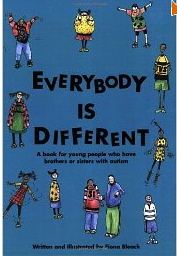The courage to accept
3January 30, 2013 by whirlyjoy
There are times when a simple visit to the drugstore can leave me wrung out with emotion.
I was there today to pick up one of Aida’s prescriptions, feeling slightly rushed, so I was pleased to see that there was no one in line ahead of me, just one spry 70-ish woman at the counter who was almost finished, swiping her card to pay for her medications.
She had started to turn away from the counter, receipt in hand, and I was readying myself to spring past the “Wait Here” sign and take her place, when she paused. “How much does this say?” she asked, holding the receipt out with a puzzled expression as she turned back to the young pharmacy assistant.
I rocked from the balls of my feet back to my heels to wait this conversation out, although “conversation” turned out to be a stretch. The customer might have been spry for her age, but she was almost completely deaf, while the pharmacy clerk was new and inexperienced and also had a very confusing speech impediment involving frequent dropped syllables – so it took some time for the two of them to sort out that the customer had been charged for the wrong medication, and then for both of them to become aware that the other party also understood that this is what was at issue. A manager was called (“Ma-ger to pha-cy please!” rang out twice over the intercom) to fix the situation.
*****
When Aida was five I advertised for a babysitter on the notice board at her developmental preschool, which is on the University of Washington campus and has vast numbers of students interested in autism and other disabilities coming through. I’d collected a number of resumes and email applications, and was following up with some calls. I usually ask candidates if they have any questions for me, after asking my own – and that’s when this young woman sprung hers on me: “What kinds of things is Aida interested in?”
I’m pretty sure I froze into silence, because I recall a long pause, and then the perky voice continuing: “You know, like, unicorns? Or trains? Or farm animals? Because, I like to bring stickers and things to help entertain the kids I babysit so it helps to know what they like?”
Parenting Aida has certain moments like that when the full significance of where she is developmentally, compared with where others her age might be, swoops over me like a cave full of bats, with such a clattering and flapping that I can hardly see or hear anything else for awhile. Nana liked to joke back then, after watching a preschool circle time or speech therapy session where we would try for the umpteenth time to get Aida to moo like a cow or quack like a duck, about how “everyone wants those poor kids to be interested in barnyard animals, and she’s just too smart for that”. But the truth of course is that she’s not “too smart”, she’s too disabled for that. Normal kids do engage around farm animals or trains or fairies or construction vehicles… or something. Mimi did, when her turn came. Back then, Aida engaged around nothing.
*****
I looked around a bit while waiting for the Bartell’s staff to sort out the mistaken charge. The aisle right behind me held the brilliant combination of feminine hygiene products on one side, and the hard liquor that regular stores in our state were only recently authorized to sell directly opposite; so that when you’re in an unhappy hormonal state you can pick up a little something to take the edge off along with your tampons. Right next to that (in an interesting judgment call) is the toy aisle, and that’s where I saw the Lego.
*****
Nowadays, if people ask me about what Aida likes, Lego tops the (fairly short) list. Over the years we’ve amassed quite a pile of bricks, as well as, more recently, Lego night lights, a Lego alarm clock (on which she promptly broke the alarm so it’s impossible to unset or turn off and beeps at a progressively more frantic pace for its full 60 seconds every day at 9:21 a.m.), a Lego themed tee-shirt and a Lego pencil sharpener.
What Aida likes about Lego is the patterns it can make. For many years in our “floortime” therapy sessions, we thought we could use Lego as a doorway to the kind of shared attention that builds social interaction and imaginary play. I bought whole sets of Lego people – I remember one that had a bunch of standard nuclear families in different ethnicities, plus the ones called “community helpers” like the police officer, firefighter, doctor, and so on. I’d mix them in with Aida’s big boxes of bricks, and then when she sat down to play I’d sit with her and try to insert these characters into her awareness, for example by having one of them walk along the wall she was building.
Aida would invariably ignore these efforts – more completely than you can probably imagine, if you haven’t spent time with a severely autistic child – never making eye contact but eventually pushing my hand and the little person away and turning her back to focus more completely on whatever pattern she was creating with her bricks, and whatever meaning that held for her. Within a short time she got more proactive, and would start every Lego play session by first meticulously removing all thirty little family members and community helpers from the box and placing them at some distance from herself, before starting a nice, fresh pattern with the plain colored blocks.
*****
There came a point – after many years of trying – when I gave up on this Lego strategy, and in fact on the whole imaginary play idea. I say this now with a certain amount of composure. In the past three or four years especially, Aida has become able to “mutually engage”, however briefly and superficially, around a few activities – putting together a puzzle or playing a bingo-style game, for example. With the benefit of hindsight, I can see that aspect of Floortime was not the right way to reach her – but there was no way to know this back then. I had pinned enormous hope on it, and worked very hard to get results. When I finally decided to concede and give her the comfort of a Lego box without those irritating little people in it, it was devastating. I put all the Lego people – and the cars, windows, doors, roof pieces, wheels, playground structures – anything that could turn Lego from a perseverative and isolating activity into the colorful swirl of an imaginary world that normal kids would want it to be – into a box for the Goodwill.
Aida was perfectly thrilled to be left alone at last with her alternating lines of bricks – and I cried on and off for days.
*****
Some hopes never completely die, apparently, because when I caught sight of a new style of Lego on the Bartell’s shelf – some kind of “playroom” concept in pinks and pastels, with a teddy bear figure – my heart leapt for just a moment. “Would Aida like that?” is the thought that just barely began to form… until Reality came running back from wherever she’d allowed herself to be distracted and viciously reminded me that Aida is never, ever, ever going to play with a teddy bear, even one with a lovely symmetrical Lego base.
*****
There are some great children’s books about autism, and Mimi was barely four when I first read one with her. Everybody Is Different explains autism as a condition involving three things. The first two, communication and social interaction, Mimi took in her stride. She was used to her six-year-old sister having no language and pretty much ignoring everyone around her, after all, so this more clinical description was no great surprise.
The third aspect, as this book presents things, is “imagination” – and when we read that, little Mimi fell completely apart. I hugged her tight and asked her why this bothered her so much more than the other things? “I know she can’t talk to me or play with me,” Mimi gasped out between sobs, “but I didn’t know she didn’t have imagination inside her head to keep her company!”
*****
The books are called things like Everybody is Different, Different Like Me: My Book of Autism Heroes, I Am Utterly Unique, My Friend Has Autism… They’re about acceptance and understanding, and mostly that’s what I’m about too. But there are moments – sometimes frequently, like the past few weeks, and sometimes kept more at bay – when my acceptance gets torn to shreds for awhile by tsunami-like waves of grief. There’s no way to avoid them, so I just hang on tight, spend a week or two taking long walks with tears running down my cheeks (Seattle is good for this since the rain hides such emotion from the glances of passers-by) and waiting for courage to return.




You are amazingly courageous, Joy. And a beautiful writer.
LikeLike
Your bravery and honesty are both strengths that come through in your words and actions. I commend the incredible courage it takes!
LikeLike
Joy- Needed this, but crying reading it. It comes in waves w Madeleine too. And, after an especially challenging evening out of the blue- even more so. Miss u. Chat soon? Tom away till 14th so any eve good for me.
Best, Dawn Sent from my iPhone
LikeLike